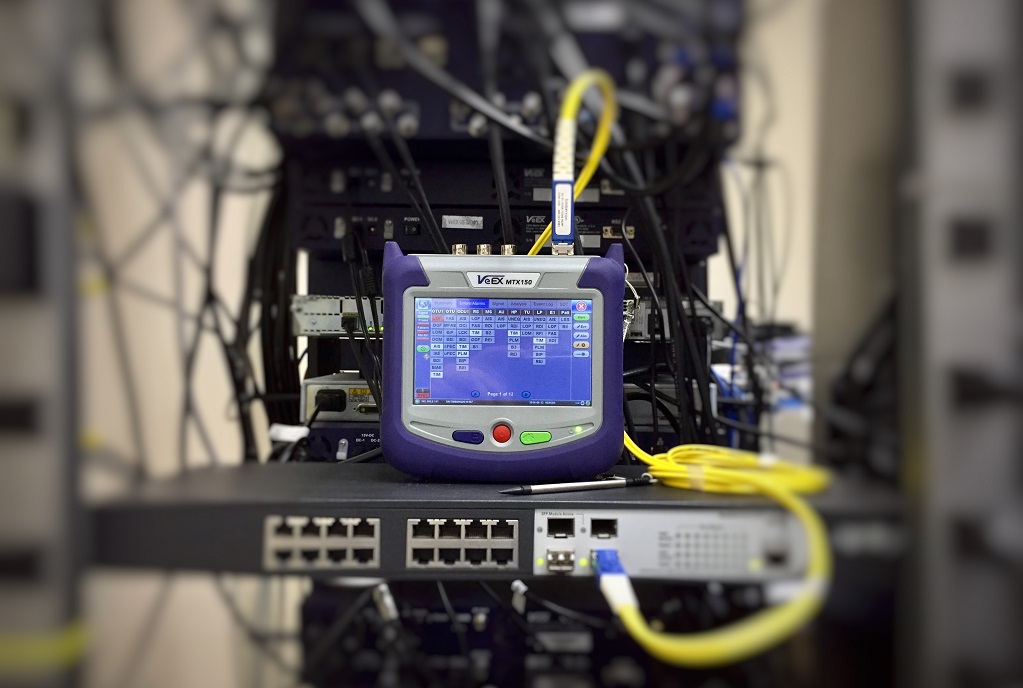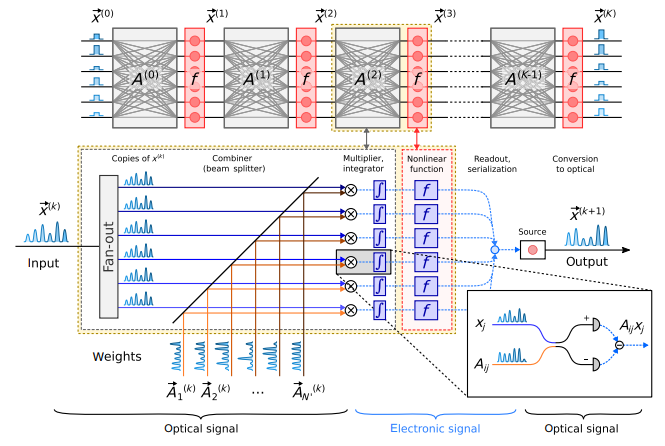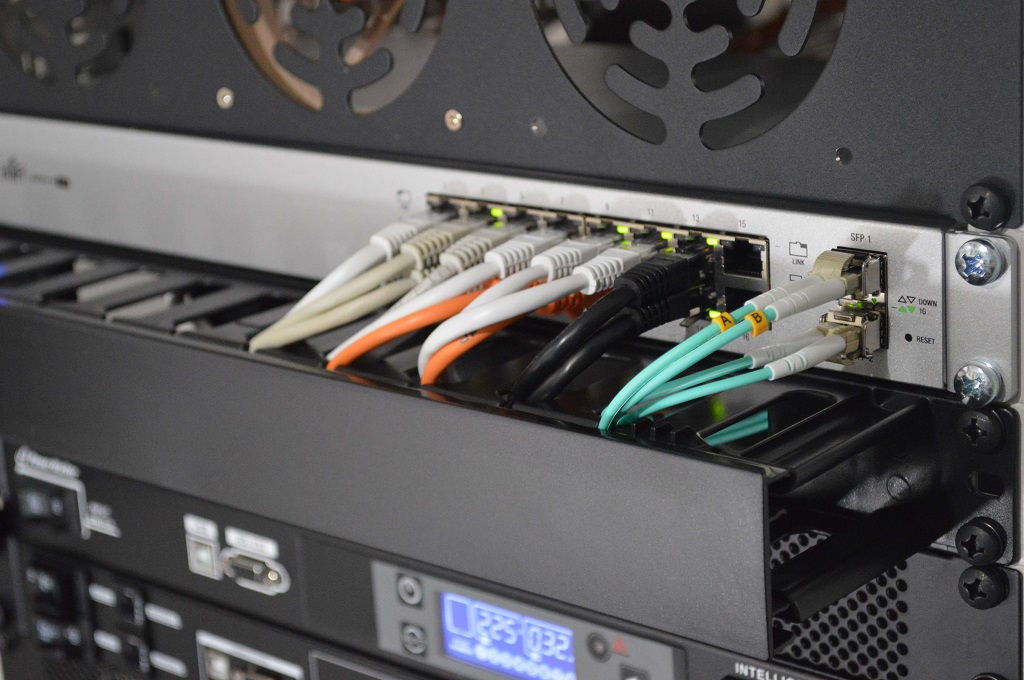Reduce power consumption in the data center - will help the new photon chip
MIT has developed an architecture for a new photon processor. It will increase the efficiency of optical neural networks a thousand times, compared with similar devices.
The chip will reduce the amount of electricity consumed by the data center. We tell how it works.

Photo - Ildefonso Polo - Unsplash
')
Optical neural networks operate faster than traditional solutions using electronic components. Light does not require isolation of signal paths, and laser fluxes are able to pass through each other without mutual influence. Thus, all signaling paths can function simultaneously, which ensures a high data transfer rate.
But there is a problem - the larger the size of the neural network, the more energy it consumes. To solve this problem, special accelerator chips (AI accelerators) are being developed, which optimize data transfer. However, they do not scale as well as we would like.
Solving the problem of energy efficiency and scaling of optical chips was taken up at MIT and presented a new photon accelerator architecture that reduces the power consumption of the device a thousand times and works with tens of millions of neurons. The developers say that in the future the technology will find application in data centers that interact with complex intelligent systems and machine learning algorithms, as well as engaged in the analysis of big data.
The new chip is based on an optoelectronic circuit. The transmitted data is still encoded by optical signals, but for matrix multiplication, balanced homodyne detection is used ( p. 30 ). This is a technique that allows you to generate an electrical signal based on two optical.
For the transmission of light pulses with information about the input and output neurons, one signaling path is used. The data on the weights of neurons, on the contrary, come through separate channels. All of them “diverge” along the grid nodes of homodyne photodetectors, which calculate the output value for each neuron (determine the signal level). This information is then fed to a modulator, which converts the electrical signal back to optical. Further, it is sent to the next layer of the neural network and the process repeats.
In their scientific work, engineers from MIT give the following scheme for a single layer:
 Image: Large-Scale Optical Neural Networks Based on Photoelectric Multiplication / CC BY
Image: Large-Scale Optical Neural Networks Based on Photoelectric Multiplication / CC BY
The new architecture of the AI accelerator requires only one input and one output channel for each neuron. As a result, the number of photodetectors is equal to the number of neurons, and not their weights.
Lightelligence, a small startup from Boston, is developing similar technology. Employees of the company say that their AI accelerator will solve machine learning problems hundreds of times faster than classic devices. Last year, the team completed the creation of a prototype of their device and prepared for the tests.
Works in the field of photonic chips and Cisco. Earlier this year, the company announced the purchase of a startup Luxtera, which designs photonic chips for data centers. In particular, the company manufactures hardware interfaces that allow you to connect fiber directly to servers. This approach improves network bandwidth and speeds up data transfer. Luxtera devices use special lasers to encode information and germanium photodetectors to decipher it.

Photos - Thomas Jensen - Unsplash
Other large IT companies, such as Intel, are also engaged in optical technology. Back in 2016, they began to produce their own optical chips that optimize data transfer between data centers. Recently, representatives of the organization said that they plan to introduce these technologies outside the data center - in lidars for unmanned vehicles.
So far, photon technology can not be called a universal solution. Their implementation requires large expenditures on technical re-equipment of data centers. But developments like those developed at MIT and other organizations will make optical chips cheaper and most likely allow them to be “promoted” on the mass market of equipment for the data center.
We at ITGLOBAL.COM help companies develop their IT infrastructure and provide private and hybrid cloud services. This is what we write about in the corporate blog:
The chip will reduce the amount of electricity consumed by the data center. We tell how it works.

Photo - Ildefonso Polo - Unsplash
')
Why do we need a new architecture
Optical neural networks operate faster than traditional solutions using electronic components. Light does not require isolation of signal paths, and laser fluxes are able to pass through each other without mutual influence. Thus, all signaling paths can function simultaneously, which ensures a high data transfer rate.
But there is a problem - the larger the size of the neural network, the more energy it consumes. To solve this problem, special accelerator chips (AI accelerators) are being developed, which optimize data transfer. However, they do not scale as well as we would like.
Solving the problem of energy efficiency and scaling of optical chips was taken up at MIT and presented a new photon accelerator architecture that reduces the power consumption of the device a thousand times and works with tens of millions of neurons. The developers say that in the future the technology will find application in data centers that interact with complex intelligent systems and machine learning algorithms, as well as engaged in the analysis of big data.
What is she like
The new chip is based on an optoelectronic circuit. The transmitted data is still encoded by optical signals, but for matrix multiplication, balanced homodyne detection is used ( p. 30 ). This is a technique that allows you to generate an electrical signal based on two optical.
For the transmission of light pulses with information about the input and output neurons, one signaling path is used. The data on the weights of neurons, on the contrary, come through separate channels. All of them “diverge” along the grid nodes of homodyne photodetectors, which calculate the output value for each neuron (determine the signal level). This information is then fed to a modulator, which converts the electrical signal back to optical. Further, it is sent to the next layer of the neural network and the process repeats.
In their scientific work, engineers from MIT give the following scheme for a single layer:

The new architecture of the AI accelerator requires only one input and one output channel for each neuron. As a result, the number of photodetectors is equal to the number of neurons, and not their weights.
Such a trip saves space on the chip, increases the number of useful signal paths and optimizes power consumption. Now MIT engineers are creating a prototype that will allow testing the capabilities of the new architecture in practice.
Who else is developing photonic chips
Lightelligence, a small startup from Boston, is developing similar technology. Employees of the company say that their AI accelerator will solve machine learning problems hundreds of times faster than classic devices. Last year, the team completed the creation of a prototype of their device and prepared for the tests.
Works in the field of photonic chips and Cisco. Earlier this year, the company announced the purchase of a startup Luxtera, which designs photonic chips for data centers. In particular, the company manufactures hardware interfaces that allow you to connect fiber directly to servers. This approach improves network bandwidth and speeds up data transfer. Luxtera devices use special lasers to encode information and germanium photodetectors to decipher it.

Photos - Thomas Jensen - Unsplash
Other large IT companies, such as Intel, are also engaged in optical technology. Back in 2016, they began to produce their own optical chips that optimize data transfer between data centers. Recently, representatives of the organization said that they plan to introduce these technologies outside the data center - in lidars for unmanned vehicles.
What is the result
So far, photon technology can not be called a universal solution. Their implementation requires large expenditures on technical re-equipment of data centers. But developments like those developed at MIT and other organizations will make optical chips cheaper and most likely allow them to be “promoted” on the mass market of equipment for the data center.
We at ITGLOBAL.COM help companies develop their IT infrastructure and provide private and hybrid cloud services. This is what we write about in the corporate blog:
Source: https://habr.com/ru/post/456984/
All Articles